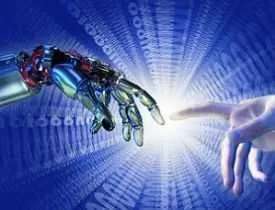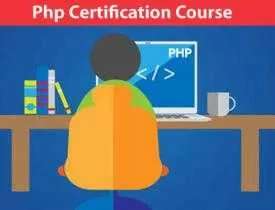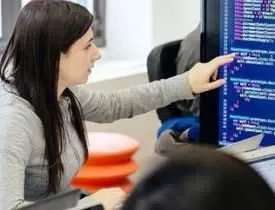Description
Course Name: Advance Diploma in Computer Software
Course Id: ADCS/Q1001.
Education Qualification: 10th Pass.
Duration: 370 Hrs.
How You will Get Diploma Certificate:
Step 1- Select your Course for Certification.
Step 2- Click on Enroll Now.
Step 3- Proceed to Enroll Now.
Step 4- Fill Your Billing Details and Proceed to Pay.
Step 5- You Will be Redirected to Payment Gateway, Pay Course and Exam Fee by Following Options.
Card(Debit/Credit), Wallet, Paytm, Net banking, UPI and Google pay.
Step 6- After Payment You will receive Study Material on your email id.
Step 7- After Completion of Course Study give Online Examination.
Step 8- After Online Examination you will get Diploma Certificate soft copy(Scan Copy) and Hard Copy(Original With Seal and Sign).
Step 9- After Certification you will receive Prospect Job Opportunities as per your Interest Area.
Online Examination Detail:
- Duration- 120 minutes.
- No. of Questions- 60. (Multiple Choice Questions).
- 10 Questions from each module, each carry 10 marks.
- Maximum Marks- 600, Passing Marks- 40%.
- There is no negative marking in this module.
| How Students will be Graded: | ||
| S.No. | Marks | Grade |
| 1 | 91-100 | O (Outstanding) |
| 2 | 81-90 | A (Excellent) |
| 3 | 71-80 | A (Very Good) |
| 4 | 61-70 | B (Good) |
| 5 | 51-60 | C (Average) |
| 6 | 41-50 | P (Pass) |
| 7 | 0-40 | F (Fail) |
Benefits of Certification:
- Government Authorized Assessment Agency Certification.
- Certificate Valid for Lifetime.
- Lifetime Verification of Certificate.
- Free Job Assistance as per your Interest Area.
Syllabus
Advance Diploma in Computer Software
Communicative English & FOC
Literature Appreciation, Vocabulary, Application of Grammar, Formal writing skills, Elements of communication, Introduction to communication, Professional communication, Nonverbal communication, Scanning for necessary information, Close reading for inference and evaluation, Main idea and supporting points, Guessing the meaning of un-familiar words, Note- making, Summarizing, Supplying a suitable title, vocabulary, application of English grammar, formal writing skills, Paragraph writing, elements of communication, introduction to communication, Professional Communication, Non- Verbal Communication.
Operating System
To learn and understand the Concepts of operating system, To Learn and understand operating system services, the core structure, functions and design principles of operating system, Interposes communications and basic concepts of virtualization, Process Management, Concurrency control, Memory Management, I/O management & Disk scheduling, Inter Process Communication, Multi-Processor Based and Virtualization Concepts, Advanced Operating System,Process Concept, Process states, Process control, Threads, Uni-processor Scheduling: Types of scheduling: Preemptive, Non preemptive, Scheduling algorithms: FCFS, SJF, RR, Priority, Thread Scheduling.
Internet & Web Designing
Introduction to Internet, TCP/IP – Internet Technology and Protocol, Internet Connectivity, Internet Network, Services on Internet (Definition and Functions), Electronic Mail, Current Trends on Internet, Web Publishing and Browsing, HTML Programming Basics, Interactivity Tools, Internet Security Management Concepts, Information Privacy and Copyright Issues, internet technology and web design, Internet Surfing, Web Chart and Usenet, Web Page Development,Define the principle of Web page design, Define the basics in web design,Visualize the basic concept of HTML, Recognize the elements of HTML.
DBMS and MySQL
What is a Database, RDBMS Terminology, MySQL Database, Installing MySQL on Linux/UNIX, Installing MySQL on Windows, Verifying MySQL Installation, Post-installation Steps, Running MySQL at Boot Time, Running and Shutting down, MySQL Server Setting, Up a MySQL User Account, Administrative MySQL, Command Administrative, MySQL Command, MYSQL – Connection, MySQL Connection Using, MySQL Binary, MySQL Connection, Using PHP Script MYSQL – Create data base Create Database Using mysqladmin Create a Database, Using PHP Script, MYSQL – dropdata base, Drop a Database using, mysqladmin, Drop Database using, What is a Database, Enables you to implement a database with tables, columns and indexes.
Basic of HTML and CSS
Structure Text Lists Links Images, Tables Forms Extra Markup Flash, Video & Audio Introducing CSS Color Text Boxes Lists, Tables & Forms Layout Images, HTML5 Layout Process & Design, Practical Information, Index Browsers, Web Servers, Screen readers, Devices, What you see, How it is Created HTML5 & CSS3, Understanding structure, Learning about markup Tags and elements, See how HTML describes the structure of a web page, Learn how tags or elements are added to your document, Write your first web page HTML, Uses Elements to Describe the Structure of Pages.
Java Server pages (JSP)
Prerequisites,what is JavaServer Pages? Why Use JSP? Advantages of JSP what is next? JSP — environmentsetup Setting up, Java Development, Kit Setting up Web Server: Tomcat Setting up class path jsp ─ architecture JSP Processing JSP ─ life cycle Paths Followed By JSP JSP ─ syntax Elements of JSP JSP ─ describe The page Directive JSP – The page Directive The include Directive JSP – Include Directive The taglib Directive JSP – The taglib Directive JSP ─ action Common Attributes The Action The Action The Action The Action The Action The Action The Action JSP ─ implicitobjects JSP ─ clientrequest JSP ─ serverresponse JSP ─ HTTP statescodes Methods to Set HTTP Status Code HTTP Status Code Example .






